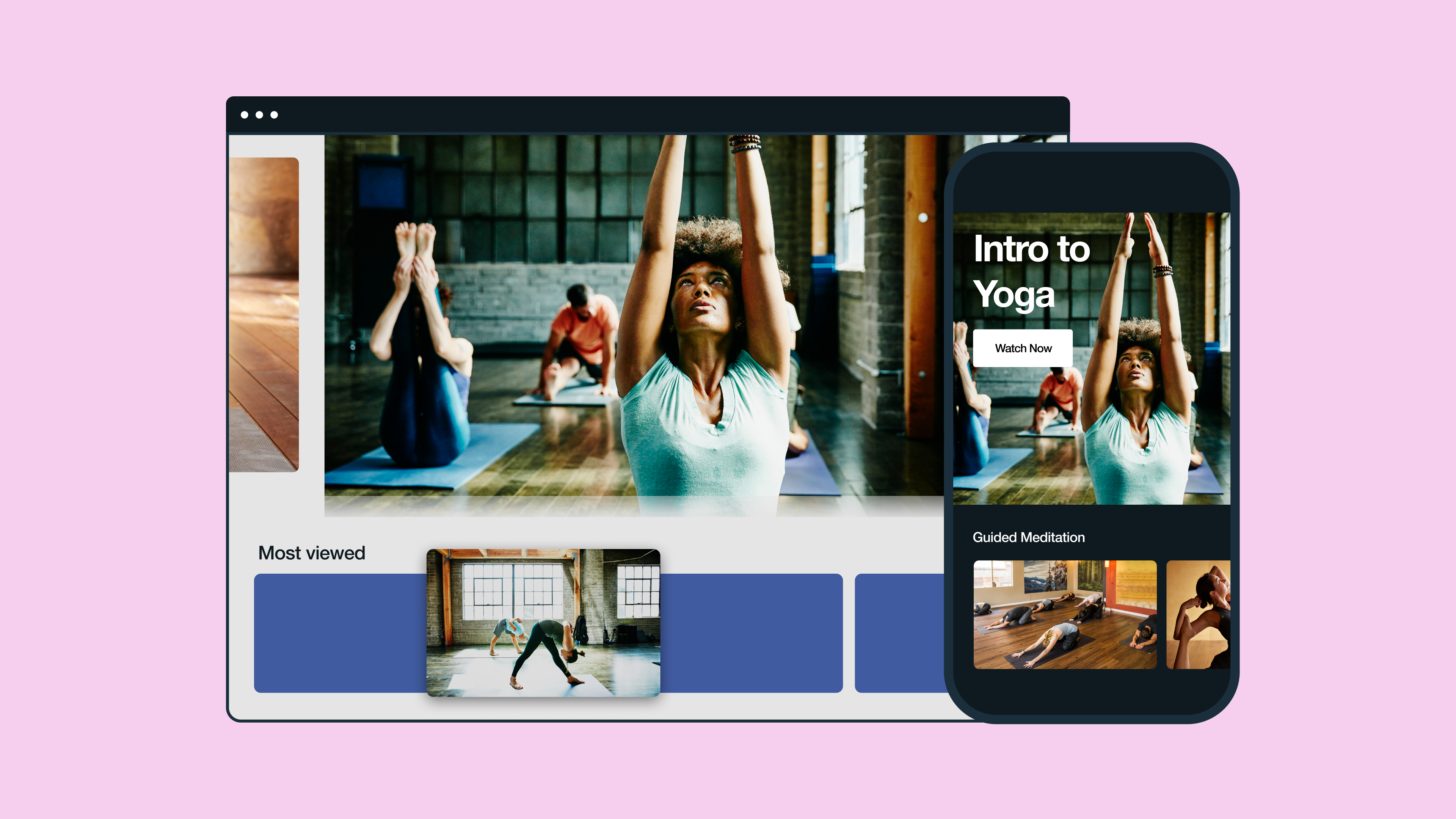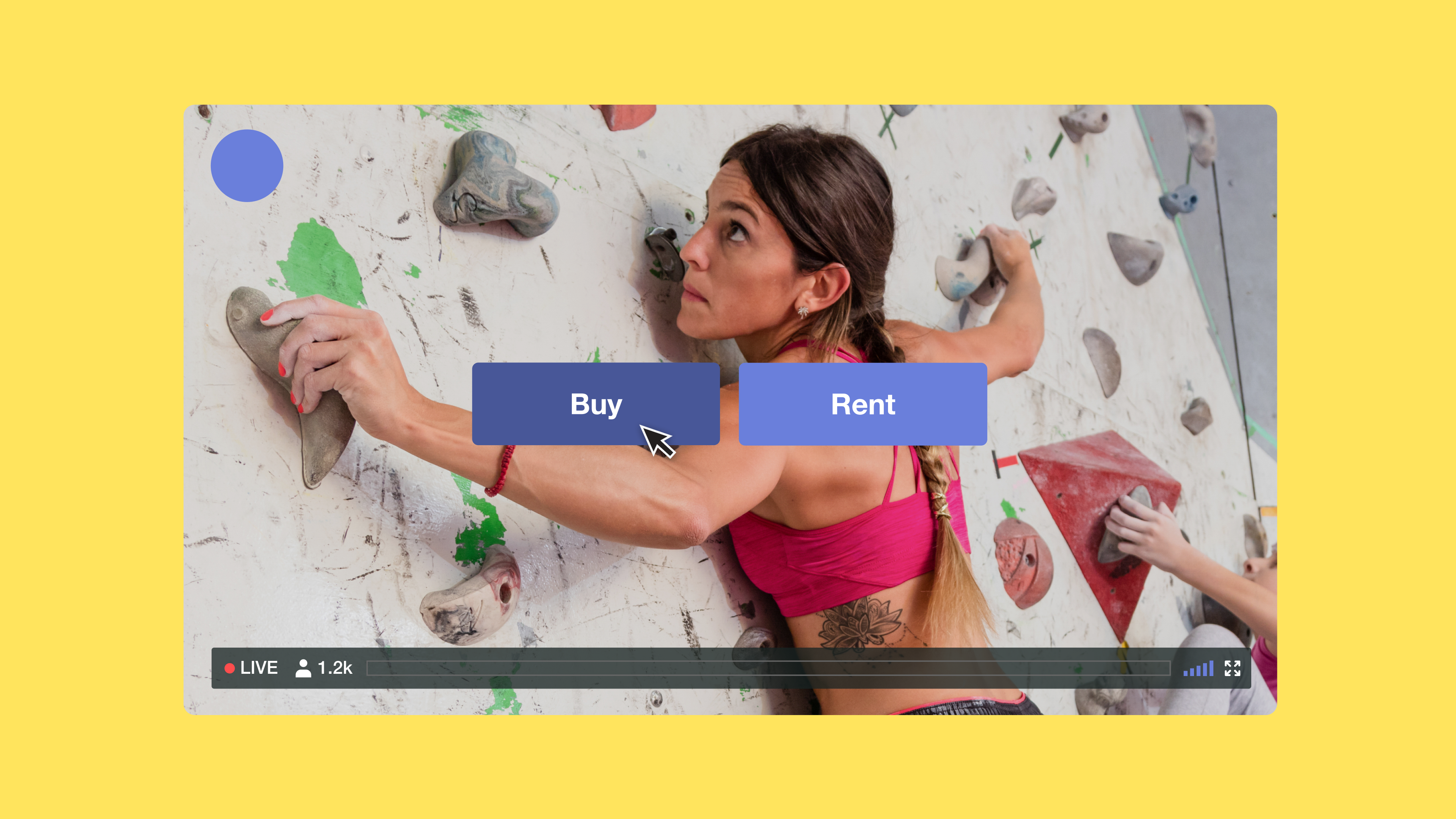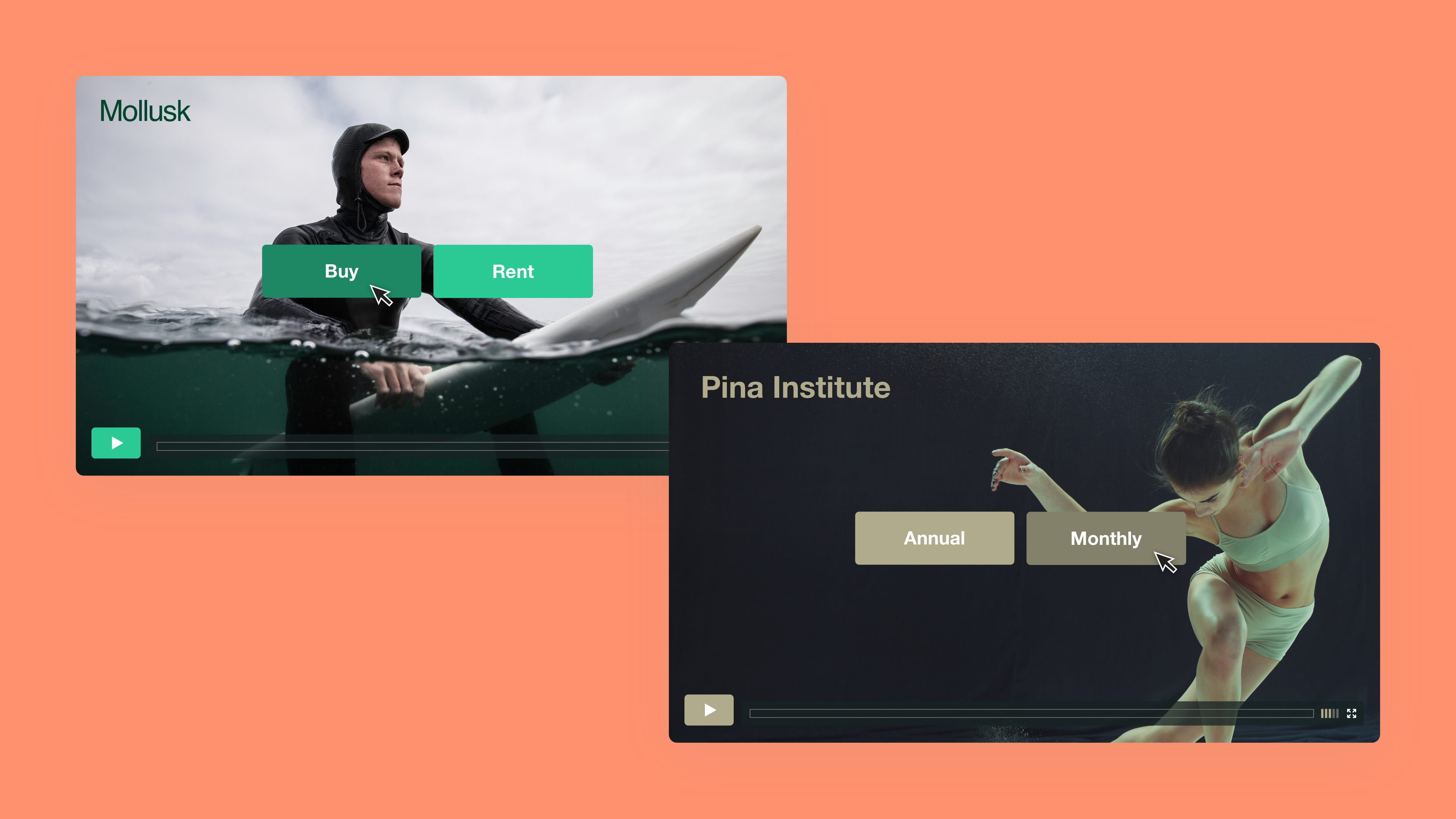
Video on demand (VOD) allows viewers to watch your video content at their convenience, wherever and whenever they prefer. With the right monetization model, you can build a lucrative streaming service that features your complete library of videos.
The amount you earn depends on the audience you target, videos you offer, and your monetization model. Your business model should be based on a deep understanding of your audience. For example, if you offer content that appeals to a broad audience (like news and sports channels), an ad model will be a strong option. But if your content is niche or difficult to find and appeals to a smaller, dedicated audience, they’re more likely to be willing to pay.
This article will help you understand the different types of VOD models so that you can select the best one for your needs.
What’s video on demand, and how does it work?
Video on demand means offering your viewers a library of video content and monetizing access to that collection. Most monetization models involve the viewer paying for access, whether on a transaction, like pay-per-view, or on a subscription basis. You can let viewers watch for free while you rely on advertising revenue. Ad tiers can entice your viewers to pay a subscription fee to see no ads, or expand your audience by offering an ad tier at a reduced cost.
All of the popular streaming platforms use VOD:
- Vimeo on Demand offers smaller filmmakers and creators the chance to sell their work. It holds a vast library of ad-free films, documentaries, and series for purchase or short-term rental.
- Netflix and Hulu combine multiple monetization models by offering tiered subscriptions that allow users to opt in or out of ads.
- YouTube monetizes engagement with ads by default, but also sells a premium subscription that removes those ads.
Host your VOD content with Vimeo →
Popular types of video on demand: 5 models
To select the right VOD monetization model for your business, you first need to know who your target audience is and what content you want to offer them. If you promote exclusive content, a pay-per-view model might work best. For the broadest possible reach, free ad-supported videos may be ideal.
Then, you’ll want to consider key factors such as the size of your content library, whether you focus on static videos or live streams, the type of audience you currently have, and the device types you’d like to support. Choosing the right VOD model means aligning it with your business goals and your target viewers’ preferences.
To help with that, let’s explore five common VOD models so you can find the perfect fit.
1. Subscription video on demand (SVOD)
First up, SVOD is the most common type of VOD streaming service. Viewers pay a monthly subscription fee, gaining access to a comprehensive library of video content. You can also create multiple subscription tiers that open up premium videos, merchandise, or access to physical events alongside removing ads.
This model requires a long-term commitment, making it a harder sell than other VOD options. You’ll need to invest heavily in your videos to ensure high-quality, frequent new releases based on your target audience’s changing wants and needs.
2. Transactional video on demand (TVOD)
TVOD is a more straightforward VOD monetization model. You offer a selection of videos, allowing viewers to rent, buy outright, or pay per view.
TVOD revenue is typically less consistent than SVOD, which brings in a predictable income stream every month. However, it requires much less commitment from viewers and allows them to pick and choose the content they want. It’s also a good alternative if you have a small video library or if this is only a minor part of your overall revenue stream.
3. Advertising video on demand (AVOD)
AVOD stands for “advertising video on demand.” You offer videos for free, and advertisers pay to run ads. The resulting revenue is split between those advertisers and your business.
This model is best suited for use when your streaming service offers third-party content. If you’re creating original content, you’ll likely struggle to make significant revenue. Either way, you’ll need enough in-demand videos and a sizable viewership to attract advertisers.
4. Live-streaming video on demand (LSVOD)
Live-streaming video on demand (LSVOD) is a model streamers often use to monetize audience engagement. Unlike live pay-per-view, which streams one live event in real time without the ability to rewind or watch again later, LSVOD is more agile. You can pause a LSVOD and catch up later without missing any information, but you generally can’t with live pay-per-view. Twitch, YouTube Live, and Vimeo Live Streaming all use LSVOD, but in different ways.
For example, Twitch runs ads before and during live streams, while Vimeo Live Streaming allows you to set up subscriptions that gate access to your streams. Thus, LSVOD is less about the monetization model and more about the type of video content you’re serving. That makes it a great candidate for a hybrid VOD system.
5. Hybrid VOD models
Hybrid models work by combining two or more types of VOD, providing viewers with options and offering you additional ways to generate revenue. Netflix is a relatable example, with three subscription tiers that combine AVOD and SVOD.
Businesses focusing on premium releases and new content may find the most success with implementing a hybrid model that combines TVOD and SVOD. You can let your audience purchase individual videos or pay per view. However, you can also offer monthly and yearly subscription options that save viewers money if they watch frequently. This provides a low-commitment way for your audience to try out your content, and a higher-investment option once they’re hooked.
What’s the relationship between VOD and OTT?
Video-on-demand is a business model for streaming services that offer paid video content. Over-the-top (OTT) refers to the method these services use to deliver videos.
All OTT means is that content is sent over the internet, rather than through traditional methods like cable or satellite. Every popular VOD model delivers videos in this way, allowing viewers to access them at any time and from any location.
With a bit of planning and the right tools, you can set up your own streaming platform that leverages these two systems to bring in revenue. Vimeo Streaming helps you set up everything you need, and it supports a variety of monetization models.
Try Vimeo Streaming today →
FAQ
What’s the difference between VOD and SVOD?
SVOD is a type of VOD. The term “SVOD” means a type of video-on-demand strategy where viewers sign up for subscriptions to a video library. Other standard VOD monetization models include transactional video on demand (TVOD) and advertising video on demand (AVOD).
Is Vimeo a VOD service?
Vimeo includes a VOD service. Watching for free on Vimeo and Vimeo on Demand both offer an extensive library of ad-free video content. But that’s just the beginning. Vimeo Streaming is an OTT service that helps content creators set up their own platforms for live streaming, webinars, or video on demand. It’s also a comprehensive video solution that allows creators to edit and distribute their work.
Which provides better revenue, TVOD or SVOD?
In most cases, SVOD provides more consistent, predictable revenue than TVOD, because in the former, viewers pay for regular subscriptions. Under a TVOD model, people pay per view or rent/buy individual videos. However, TVOD may earn more than SVOD if you have a small content library or an existing audience.
Create, stream, and monetize your content with Vimeo
Choosing the right VOD model is crucial if you aim to generate a profit with your streaming service. You need to consider the type of content you offer, along with your audience, goals, budget, and capabilities. This knowledge will inform the monetization method you choose, and allow you to boost engagement and revenue.
However, the model isn’t the only factor that will impact your success with VOD. You’ll also need a secure and reliable platform that can quickly share high-quality content. Vimeo’s video hosting and live-streaming services use a global CDN and advanced security systems to deliver smooth playback, on any device and to any audience.



